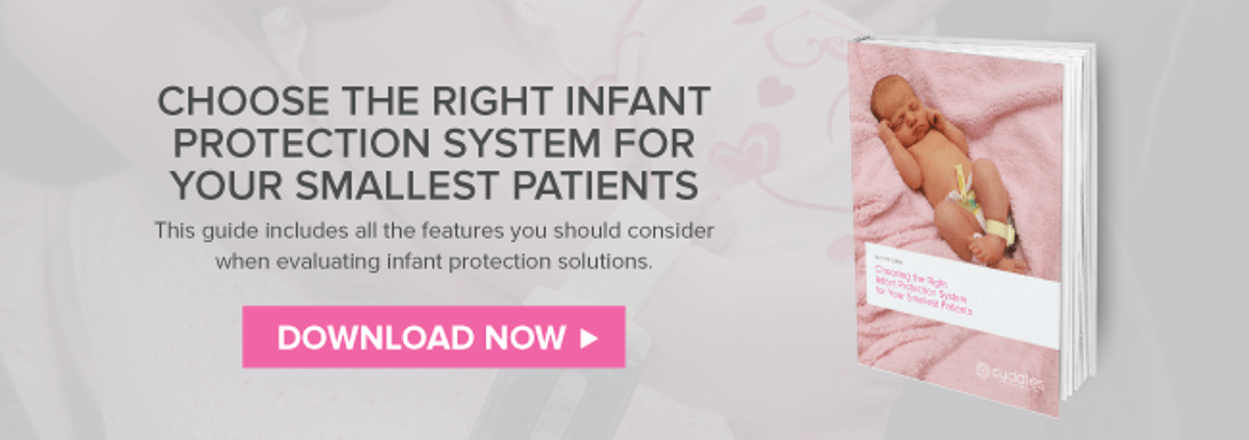Infant Abduction Sheds Light on the Need for More Protection Systems

Infant abduction from a healthcare facility can happen in seconds, despite standard security measures and staffs’ best intentions. Just last month, a woman was arrested for breaking and entering into a North Carolina hospital.
The woman was denied entry at the front desk, but found another way to sneak in and enter the maternity ward. No babies were harmed, as staff realized she didn’t have a visitor’s badge and called the police immediately. Authorities believe the woman was attempting similar break-ins at various North and South Carolina hospitals, with the intention of abducting a baby.
What could have been
Luckily, the predator was stopped in this instance, as the hospital in question had many security measures in place. But what if the woman had obtained a visitor’s badge, or was disguised as a nurse or staff member? Staff may not have immediately noticed that she didn’t belong there, leaving time for an abduction.
Standard security protections—like visitor check-in and badges, access control and staff vigilance—are important but may not be sufficient to protect your maternity ward from the unthinkable. Many hospitals are increasing their protection measures to better ensure infant safety and provide peace of mind to parents.
What your facility can do
It’s always a good idea to examine your current security practices and see if there are additional measures you could be taking to protect your maternity ward. Consider the following security protocols:
- Frequent staff training and drills, simulating a variety of potential scenarios so staff are prepared for any situation
- Patient communication protocols, so parents understand the safeguards in place and always know where their baby is
In addition to these important security measures, many hospitals are taking more comprehensive security steps through the use of an infant protection system. The best systems available today offer the following:
- Matching mother and infant tracking bands, to monitor each baby at all times
- Multiple alarm options to monitor doors and restricted areas, track infant movements, and more
- Electronic access control to further restrict access to the ward
- Sophisticated software for multi-level floor monitoring, alarm tracking, security reports, and quick admit and discharge
Is it time to enhance your facility’s infant security protocols for even more comprehensive protection? Learn more about the benefits of an infant protection system plus essential features to look for in this guide.
SUBSCRIBE TO OUR NEWSLETTER!
RECENT POSTS
- The Future of Baby Footprinting
- Addressing the Rise of Dementia with ResidentGuard Wander Management Solutions
- The Evolution of Infant Protection in Healthcare Technology
- Safeguarding Patient Privacy with Role-Based Access Control
- Essential Features of an Access Control System
- Groundbreaking Blood Test for Alzheimer’s: A Game Changer for Early Detection and Routine Testing
- Early Signs of Dementia Wandering: How to Identify and Manage This Behavior
- Understanding Role-Based Access Control in Physical Security
- How Hospitals Prevent Infant Switching
- Top 10 Security Challenges Facing Hospitals and How to Solve Them
RECENT POSTS
- The Future of Baby Footprinting
- Addressing the Rise of Dementia with ResidentGuard Wander Management Solutions
- The Evolution of Infant Protection in Healthcare Technology
- Safeguarding Patient Privacy with Role-Based Access Control
- Essential Features of an Access Control System
- Groundbreaking Blood Test for Alzheimer’s: A Game Changer for Early Detection and Routine Testing
- Early Signs of Dementia Wandering: How to Identify and Manage This Behavior
- Understanding Role-Based Access Control in Physical Security
- How Hospitals Prevent Infant Switching
- Top 10 Security Challenges Facing Hospitals and How to Solve Them

